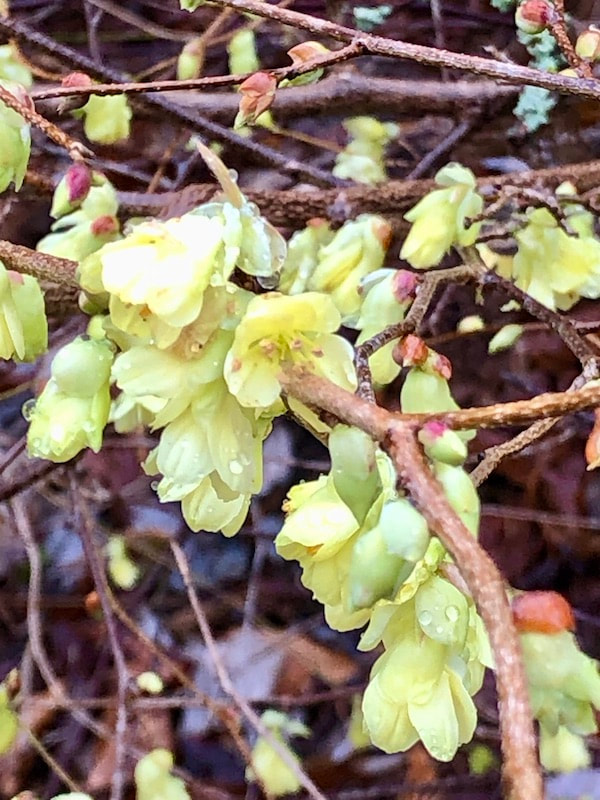- In the Garden
- >
- Gardens
- >
- Gardens I-P
- >
- Japanese Garden
- >
- Corylopsis sp. and Corylopsis glabrescens 'Longwood Chimes'
Corylopsis sp. and Corylopsis glabrescens 'Longwood Chimes'
Common name: Winter hazel and fragrant winter hazel
Corylopsis are deciduous, multi-stemmed shrubs in the witch hazel family (Hamamelidaceae), native to eastern Asia. Most of the species are endemic to China, but some are also found in Japan, Korea, and the Himalayas. Plants in the Corylopsis genus are valued for their early racemes of soft yellow, bell-shaped flowers which hang in drooping clusters on branches before any leaves appear. Corylopsis leaves are toothed and prominently veined. The stems of this shrub are in a zigzag pattern, and seem to go in every direction.
The genus name derives from two Greek words. 'Korylos' means hazel, and 'opsis' means like or resembling, referring to the leaves which are similar to those of the hazel (Corylus). Corylopsis enjoys light shade and well-drained soil. The flowering branches can be forced inside in a vase, and are long lasting.
The cultivar Corylopsis glabrescens 'Longwood Chimes', or fragrant winter hazel, blooms later and lasts longer than other cultivars. It has racemes of pendulous, soft, greenish-yellow flowers which dangle from bare branches. Its leaves are strongly veined, dark green with grayish undersides, and turn golden yellow in the fall.
Dr. Clifford Parks of the University of North Carolina collected seeds of Corylopsis glabrescens in southern Kyushu, Japan on behalf of the U. S. National Arboretum. In 1985, Longwood Gardens of Pennsylvania received three seedlings. Ten years later, one of the seedlings was chosen, and introduced as C. glabrescens 'Longwood Chimes'. In 1999 this cultivar became commercially available.
Corylopsis glabrescens 'Longwood Chimes' can be found in Bed 86 of the Japanese Collection. The photos were taken in early spring 2023.
Text and photos by Kumi Sutcliffe






